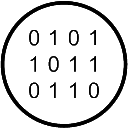 Journals as Intellectual History: A New Historiography through Digital Mapping
Journals as Intellectual History: A New Historiography through Digital Mapping
Sarika Joshi, Santa Fe College
Kevin Mitchell Mercer, University of Central Florida
David J. Staley, Ohio State University
Session Abstract
Journals are viewed as repositories of record for scholarship. In the digital age, historians expect journals to be available electronically for searches, but until recently they were unlikely to study journals as intellectual history and sources for digital scholarship. Informed by the advances in “Big Data” and “Knowledge Mapping,” digital historians Scot French (University of Central Florida) and David J. Staley (Ohio State University) and visualization specialist Bill Ferster (University of Virginia) worked with the editorial staff of the Florida Historical Quarterly and graduate students at UCF and Ohio State to apply “macro-level reading and text-mining tools to the secondary literature of a scholarly field (History) and its subfields (American History/Florida History) to make ‘visible’ patterns of topical ‘coverage,’ changing conceptual/analytical/theoretical frames of reference, and patterns of scholarly influence.” (http://journalofdigitalhumanities.org/3-1/visual-historiography-visualizing-the-literature-of-a-field/) The resulting visualization of eighty-five years (1924-2009) of publication of the Florida Historical Quarterly the content became a hemeneutical/scholarly performance to demonstrate the primacy of topical/historiographical patterns.
In subsequent projects, the panelists are studying the shape and form of historiography by using the data analytics techniques to “read” the literature of a field at a macro-scale distance using the full run of the American Historical Review. A second project uses the Florida Historical Quarterly to map dissent using ArcGIS. A third project offers a preliminary study of the acquisition and accumulation of knowledge by examining the societal pressures and personal inclinations that influence a journal editor’s decisions and the shaping of a journal’s contribution to scholary knowledge.
The papers presented in this panel open the door for a new historiography that challenges assumptions about how we understand secondary literature. Visualization of the patterns in scholarly production raises questions about timing of paradigm changes. Close attention to the influence of journal editors enables a better understanding of the topical/historiographic orientation of the journal.
The panel is co-sponsored by the Conference of Historical Journals and the AHA's Director of Scholarly Communication and Digital Initiatives.
